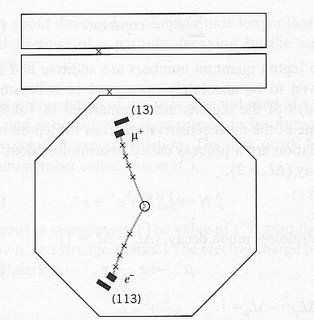discovery of tau lepton
Discovery of the tau lepton: (Martin L Perl.)
In 1975.
The tau lepton was detected through a series of experiments between 1974 and 1977 by Martin Lewis Perl with his colleagues at the SLAC-LBL group. Their equipment consisted of SLAC's new e+-e− colliding ring, called SPEAR, and the LBL magnetic detector. They could detect and distinguish between leptons, hadrons and photons. They did not detect the tau lepton directly, rather they discovered anomalous events:
There must have been undetected particles because not all energy from the initial collision could be accounted for in the final state. However, they did not detect any other muons or electrons, or any hadrons or photons. It was proposed that this event was the production and subsequent decay of a new particle pair:
This was difficult to verify because the energy to produce the τ+τ− pair is similar to the threshold for D meson production. Work done at DESY-Heidelberg, and with the Direct Electron Counter (DELCO) at SPEAR, subsequently established the mass and spin of the tauon.
Martin Perl shared the 1995 Nobel Prize for physics with Frederick Reines. The latter was awarded his share of the prize for detecting the neutrino.
The Stanford Linear Accelerator Center (SLAC) is a United States Department of Energy National Laboratory operated by Stanford University under the programmatic direction of the U.S. Department of Energy Office of Science. The SLAC research program centers on experimental and theoretical research in elementary particle physics using electron beams and a broad program of research in atomic and solid state physics, chemistry, biology, and medicine using synchrotron radiation.[1] The 3.2 kilometer (2.0 mile) long underground accelerator is the longest linear accelerator in the world, and is claimed to be "the world's straightest object."



